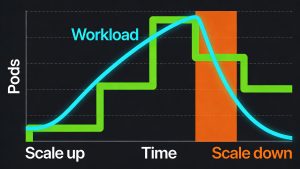In the ever-evolving landscape of artificial intelligence, Large Language Models (LLMs) have become indispensable tools for various applications. However, these models face a significant challenge: the tendency to produce hallucinations, or plausible-sounding but factually incorrect statements. This issue has been a major concern, particularly in fields requiring high accuracy, such as medicine and law.
The Hallucination Problem
LLMs generate text based on patterns learned from vast datasets, which can sometimes lead to inaccuracies. These hallucinations manifest as incorrect facts or misrepresentations, undermining the model’s reliability and potentially spreading misinformation. As a result, addressing this issue has become a critical goal in natural language processing.
Larimar: A Memory-Augmented Solution
Researchers from IBM Research and T. J. Watson Research Center have developed an innovative approach to mitigate hallucinations in LLMs. Their solution revolves around a memory-augmented LLM called Larimar.
Larimar’s Architecture
Larimar combines a BERT large encoder and a GPT-2 large decoder with a memory matrix. This unique architecture allows the model to store and retrieve information more effectively, reducing the likelihood of generating hallucinated content.
The Scaling Technique
The researchers introduced a novel method that scales the readout vectors, which act as compressed representations in the model’s memory. These vectors are geometrically aligned with the write vectors to minimize distortions during text generation. Importantly, this process doesn’t require additional training, making it more efficient than traditional methods.
Experimental Results
The team tested Larimar’s effectiveness using a hallucination benchmark dataset of Wikipedia-like biographies. The results were impressive:
- When scaling by a factor of four, Larimar achieved a RougeL score of 0.72, compared to the existing GRACE method’s 0.49 – a 46.9% improvement.
- Larimar’s Jaccard similarity index reached 0.69, significantly higher than GRACE’s 0.44.
These metrics demonstrate Larimar’s superior ability to produce more accurate text with fewer hallucinations.
Efficiency and Speed
Larimar’s approach offers significant advantages in terms of efficiency and speed:
- Generating a WikiBio entry with Larimar took approximately 3.1 seconds on average, compared to GRACE’s 37.8 seconds.
- The method simplifies the process, making it faster and more effective than training-intensive approaches.
Implications for AI Reliability
The research from IBM represents a significant step forward in enhancing the reliability of AI-generated content. By addressing the hallucination problem, Larimar’s method could pave the way for more trustworthy applications of LLMs across various critical fields.
As AI continues to integrate into our daily lives, ensuring the accuracy and reliability of AI-generated content becomes increasingly crucial. IBM’s innovative approach with Larimar offers a promising solution to this challenge, potentially broadening the applicability of LLMs in sensitive domains and enhancing overall trust in AI systems.



